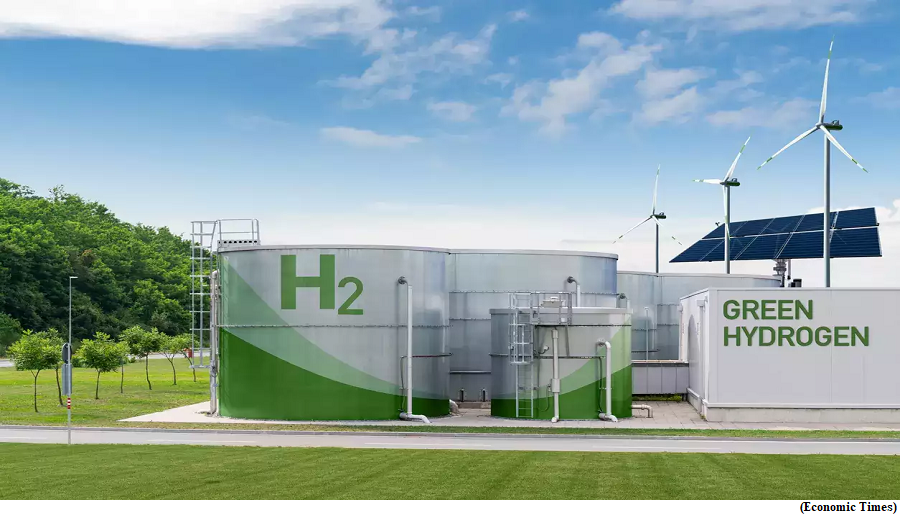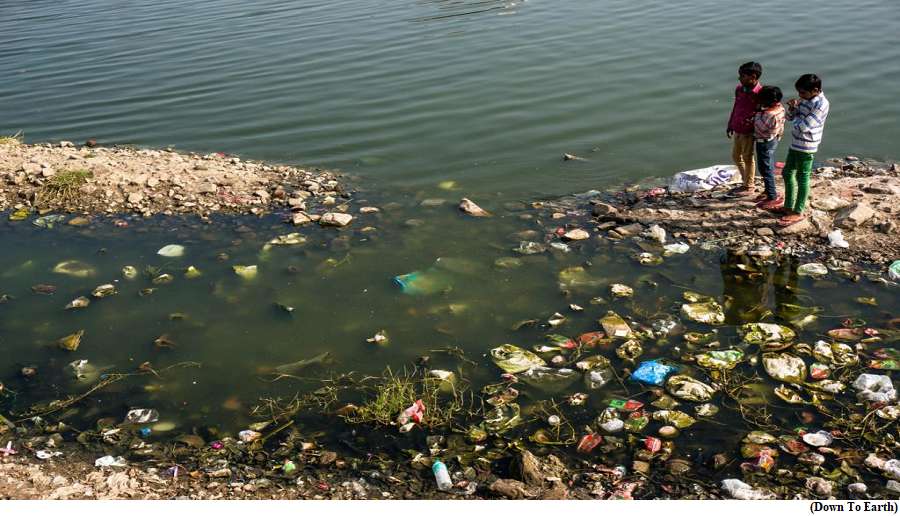Government allocates Rs 455 crore for green hydrogen pilot projects in steel sector (GS Paper 3, Economy)

Why in news?
- The Union Ministry of New and Renewable Energy recently released scheme guidelines for implementation of pilot green hydrogen projects in the steel sector under the National Green Hydrogen Mission (NGHM).
- The government also allocated Rs. 455 crore till financial year 2029-30 to promote the use of green hydrogen in the sector.
Potential:
- Considering the high cost of green hydrogen, the initiative would support steel plants for blending a small percentage of green hydrogen in their processes.
- The blending share can increase as cost economics improve and technologies advance. The scheme will provide support for development /selection /validation of commercially viable technologies using hydrogen in steel sector that:
- Use 100 per cent hydrogen in direct reduced iron (DRI) process using vertical shaft / kiln
- Use hydrogen in blast furnaces within prescribed limits
- Substitute fossil fuels with hydrogen in a gradual manner in DRI process
- Use hydrogen in any other innovative way to reduce carbon emissions in iron and steel production.
National Green Hydrogen Mission (NGHM):
- NGHM was launched on January 4, 2023 and had an outlay of Rs 19,744 crore, with the aim to make India a global hub for production, usage and export of green hydrogen.
- The mission aims to add to India’s effort on becoming self-reliant through clean energy and become a model state in global clean energy transition.
- The mission has set the target to have a capacity of 5 million tonnes of green hydrogen per annum in India by 2030. Initially, it was being speculated that in terms of industrial usage, most of the green hydrogen initiatives and allocation would happen in the fertiliser and petro-chemical sector, as they already use grey hydrogen in their processes which could be then replaced by green hydrogen.
Sweden’s success:
- Swedish company SSAB was the first globally to produce steel through hydrogen back in 2018.
- SSAB along with Vattenfall ( an European Energy Company ) and LKAB (a Swedish minerals and mining group) through HYBRIT technology are planning to bring out world's first fossil free steel to the market by 2026.
- Yet another Swedish company, H2-Green Steel, is also planning to roll out its first batch of green steel using hydrogen by 2025. Similar initiatives are being taken by Nippon Steel in Japan and other competitors in France and Germany.
- At the 28th Conference of Parties to the United Nations Framework Convention on Climate Change, India announced its partnership with Sweden under the LEAD-IT initiative which had a focus on industrial decarbonisation, specially the steel sector.
- One of the major reasons behind this partnership was obviously Sweden’s lead in steel production through hydrogen. Other factors driving this initiative may have been policies like the Carbon Border Adjustment Mechanism and India’s high share of steel export to the European Union.
Domestic initiatives:
- Domestically, companies like Tata Steel and ArcelorMittal Nippon Steel India had started taking initiatives towards using hydrogen.
- In January 2024, ArcelorMittal Nippon Steel India signed a memorandum of understanding (MoU) with the Maharashtra government, proposing to establish a 6 million tonnes per annum green steel plant in Maharashtra that plans to use hydrogen instead of coal.
- The Maharashtra government also signed MoUs with seven renewable energy companies to develop a proposed capacity of 910 kilotonnes per annum of green hydrogen projects.
Nitrogen pollution to triple scarcity in river sub-basins worldwide
(GS Paper 3, Environment)
Why in news?
- Water scarcity is exacerbated by declining water quality in numerous regions, and the situation is expected to worsen in the years to come.
- A recent study highlighted that an additional 40 million square kilometres of river basin area and three billion more people may face water scarcity in 2050 than previously estimated.

Nitrogen Pollution:
- A significant factor contributing to this crisis is nitrogen pollution in rivers, a concern that emerged in 2010 and is anticipated to persist until 2050.
- The global impact of future nitrogen pollution is alarming, with the number of sub-basins experiencing water scarcity expected to triple.
Clean-water scarcity:
- The study introduces the term ‘clean-water scarcity’ and provides a comprehensive assessment considering both water quantity and quality. This assessment, based on global nitrogen pollution and incorporating various climatic and socio-economic scenarios, reveals a more dire situation than previous evaluations.
- Comparing the clean-water scarcity assessment to the traditional water scarcity assessment based solely on quantity, the number of sub-basins facing severe scarcity doubled in 2010 and is projected to potentially triple by 2050.
- Water pollution, particularly nitrogen pollution, played a significant role in aggravating water scarcity in 2,000 sub-basins worldwide.
- In 2010, 984 sub-basins were deemed water scarce based on quantity alone, while 2,517 sub-basins faced scarcity due to both quantity and quality. This number is anticipated to increase to 3,061 sub-basins in the worst-case scenario in 2050, as outlined in the study
- When considering only water quantity, the study estimated that 45 per cent of the global population lived in areas with severe water scarcity in 2010. However, when water quality is factored in, this estimate rose to 80 per cent.
- Future clean-water scarcity hotspots were identified in China, India, Europe, North America, and potentially Central Africa in the worst-case scenario, each with unique challenges requiring targeted solutions.
Sources of nitrogen pollution:
- Nitrogen losses in rivers can stem from various sources, including human waste, agricultural practices and fertiliser applications.
- In the worst-case scenario, sewage is projected to become the dominant source of nitrogen pollution in rivers due to rapid urbanisation and inadequate wastewater treatment infrastructure.
- India, for instance, experiences nitrogen pollution primarily from agriculture in the first two climate scenarios, but sewage is projected to surpass agriculture as the main source in the worst-case scenario.
- A similar trend was observed for Africa, where both agriculture and sewage contribute to nitrogen pollution, but sewage was projected to be the main source in the worst-case scenario.
What needs to be done?
- The study underscored the urgency of addressing water quality in future water management policies to align with Sustainable Development Goals.
- In India, the State of India’s Environment Report 2023 indicated a concerning deviation from the Sustainable Development Goals (SDG), particularly SDG 6 (clean water and sanitation) in 15 states.
- The impact of Shared Socioeconomic Pathways; climate change scenarios projecting global socioeconomic changes up to 2100 further emphasises the need for proactive measures.
- Mitigation strategies addressing water pollution require increased attention, as low water quality emerges as a critical or even dominant factor contributing to water scarcity in many river basins. Controlling nitrogen pollution is identified as a challenging yet imperative aspect of these strategies.



